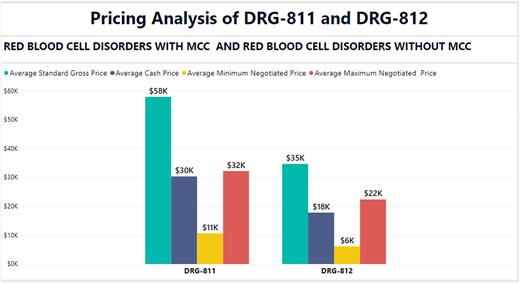Abstract
Introduction:
In early 2022, a study was done to assess the knowledge of Internal Medicine (IM) residents on healthcare charges in North Alabama Medical Center (NAMC). This study revealed a significant knowledge gap among residents, identifying a potential area that needs academic advancement to empower future physicians with vital information to make cost-conscious decisions for their patients. A curriculum was started as part of the Systems-Based Practice core competency to educate IM residents at NAMC about healthcare costs and price transparency to serve this purpose. As an extension, we performed this study to create awareness among hematologists-in-training and practicing hematologists regarding price transparency in hematology.
Methods:
This study used data from the ZeaMed Health hospital pricing database. ZeaMed Health is a pricing analytics company that downloaded hospital information across the United States from the Centres for Medicare and Medicaid (CMS) database. As part of the CMS Hospital price transparency rule, the hospitals publish data of the chargemaster and 300 shoppable services in a machine-readable format on hospital websites. ZeaMed Health collected hospital pricing data posted on the hospital websites. The data collection period was from January to June 2022. The information compiled included charge master data (i.e., standard gross prices, discounted cash prices, de-identified minimum negotiated charges, and de-identified maximum negotiated charges). The individual insurance negotiation rates were excluded since the minimum, and maximum negotiated rates exist.
The following 12 unique Diagnosis Related Groups (DRGs) are related to the hematology section (799, 800, 801, 808, 809, 810, 811, 812, 813, 814, 815, 816). DRG 811, Red blood cell disorders with major complications or comorbidity (MCC), and DRG 812, Red blood cell disorders without MCC, were chosen to make it easy for the audience to comprehend.
It is found that not all hospitals have provided all four standard charges on pricing data. Some hospitals provided only minimum and maximum negotiated prices, and others provided all four charges. Those hospitals' data that have all four standard prices are retained. Eight hundred forty-two out of the total 3115 DRG files were identified as 811 and 812 DRGs. Of 842 files, 332 were excluded because they did not provide all four standard charges. Of the remaining 510 files, 31 only mentioned anesthesia charges, making the total file count 479 (which includes both DRGs 811 and 812). Of the 479 files, 210 files belong to DRG 811, and 269 files belong to DRG 812.
Any four standard prices below $1000 were excluded to remove the outliers. After excluding them, the final count was 204 for DRG 811 and 253 for DRG 812. The data does not include the professional fee.
Results: The Red Blood Cell Disorders with MCC (DRG 811) and Red Blood Cell Disorders without MCC (DRG 812) were studied.
For the 204 hospitals with DRG 811, the average standard gross price is $58,000, the average cash price is $30000, the average minimum negotiated price is $11000, and the average maximum negotiated price is $32000.
For the 253 hospitals with DRG 812, the average standard gross price is $35000, the average cash price is $18000, the average minimum negotiated price is $6000, and the average maximum negotiated price is $22000.
In both the DRGs, the average discounted cash price is lower than the average maximum negotiated price and higher than the average minimum negotiated price. This information is helpful for patients who are either uninsured or underinsured. This average data gives the power to the patient to negotiate for the lower price, that is, the minimum negotiated price. Without this information, the patient would otherwise pay the discounted cash price, which is $19000 higher on DRG -811 and $12000 higher on DRG-812.
Conclusion: As hematologists in training and in practice, we have a duty to our patients to educate them on the economics of medicine and to provide cost-effective care. Our study serves to encourage other clinical educators to consider incorporating this curriculum into their resident's and fellow training. Our program serves as a model for this and has already taken the initiative of incorporating this curriculum in resident didactic with lectures delivered by the senior author and senior investigator of this study, who is also the founding designated institutional official (DIO) of the program.
Disclosures
Isaac:Pfizer: Current equity holder in private company. Bondugula:ZeaMed: Other: CEO of ZeaMed and the data provided voluntarily without any financial incentive. The data is provided to advance medical education.
Author notes
Asterisk with author names denotes non-ASH members.


This feature is available to Subscribers Only
Sign In or Create an Account Close Modal